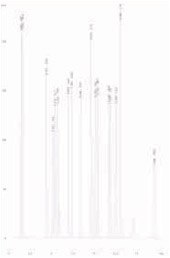Solution with 17 Amino Acids as TraceCERT® Certified Reference Material
Jürg Wüthrich
Analytix, 2010, 5
Amino acids, especially the proteinogenic alpha-amino acids, are critical to nearly every living organism since they have many functions in metabolism. Of course, their most important function is to act as building blocks of proteins. However, amino acids are also important in many other biological molecules, such as forming parts of coenzymes or as precursors for biosynthesis. Due to this central role in biochemistry, amino acids are very important in nutrition and are commonly used in food technology. They are also used in industry where applications include production of biodegradable plastics, drugs and chiral catalysts.
The most common means of understanding chemical or biochemical processes occurs by measuring relevant analytes using an appropriate analytical method. The more accurate the analytical results, the more dependable are the conclusions that can be found.
The quality of the reference material used for calibration of the instruments is crucial for the reliability of analytical results. Most trustworthy are certified reference materials (CRMs), which must fulfill at least two important requirements: traceability to an internationally accepted reference or reference material, and the certified value must be stated with a properly calculated uncertainty.
Chromatographical purity not sufficient
Conventionally, the purity of an organic substance is determined by means of GC or HPLC. The reported chemical composition is determined by identifying the relative amounts of water, residue solvents and inorganic impurities based on information from the generated chromatographs. However, since every chemical substance has its own characteristic absorption behavior, direct traceability is only possible if an internationally accepted CRM is available for the compound in question.
Certification of amino acids by qNMR
Quantitative NMR (qNMR) offers many advantages over other analytical techniques with regard to quantification or purity determination of organic substances. The most outstanding attribute of qNMR is that it is a relative primary method: the signal intensity is in direct proportion to the number of protons contributing to the resonance. Thus, the structures of the chemical substances are completely irrelevant. In addition, no significant empirical factors or unknown biases contribute to the ratio of signals. In other words, the direct response of a qNMR experiment is of highest trueness, leading to certified values with low uncertainties (also AnalytiX Issue 3 2010 “Launch of a new generation of organic CRMs” ).
Production of Amino Acid Solution
The 17 amino acids used as starting materials for the CRM solution have been certified using qNMR for content determination with direct traceability to NIST SRM. These amino acids are also available as neat CRMs as part of our TraceCERT product line (AnalytiX Issue 3 2010, page 4). The next steps include high-precision weighing of the amino acids and filling the gravimetrically produced bulk solution under argon atmosphere in 2 mL glass ampoules. The complete production process and certification are performed under double accreditation ISO/IEC 17025 and ISO Guide 34.
With this CRM, scientists working in the field of biochemistry now have a better tool in their hands to obtain a sharper view on the processes of life. For the complete portfolio of the organic CRMs of theTraceCERT product line, please check our Website.

Figure 1. Chromatogram of the new certified reference material product number 79248. The separation of the 17 amino acids is performed using pre-column derivatization (OPA/FMOC derivatives) and reversed-phase chromatography (Hypersil AA-ODS) according to Agilent Application Note 5968-5658E (Angelika Gratzfeld-Huesgen, Sensitive and Reliable Amino Acid Analysis in Protein Hydrolysates using the Agilent 1100 Series HPLC).
Materials
To continue reading please sign in or create an account.
Don't Have An Account?